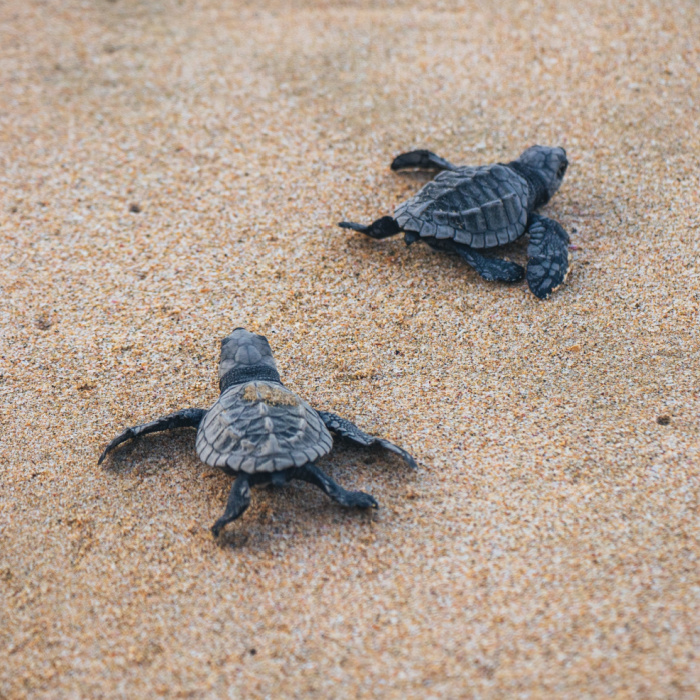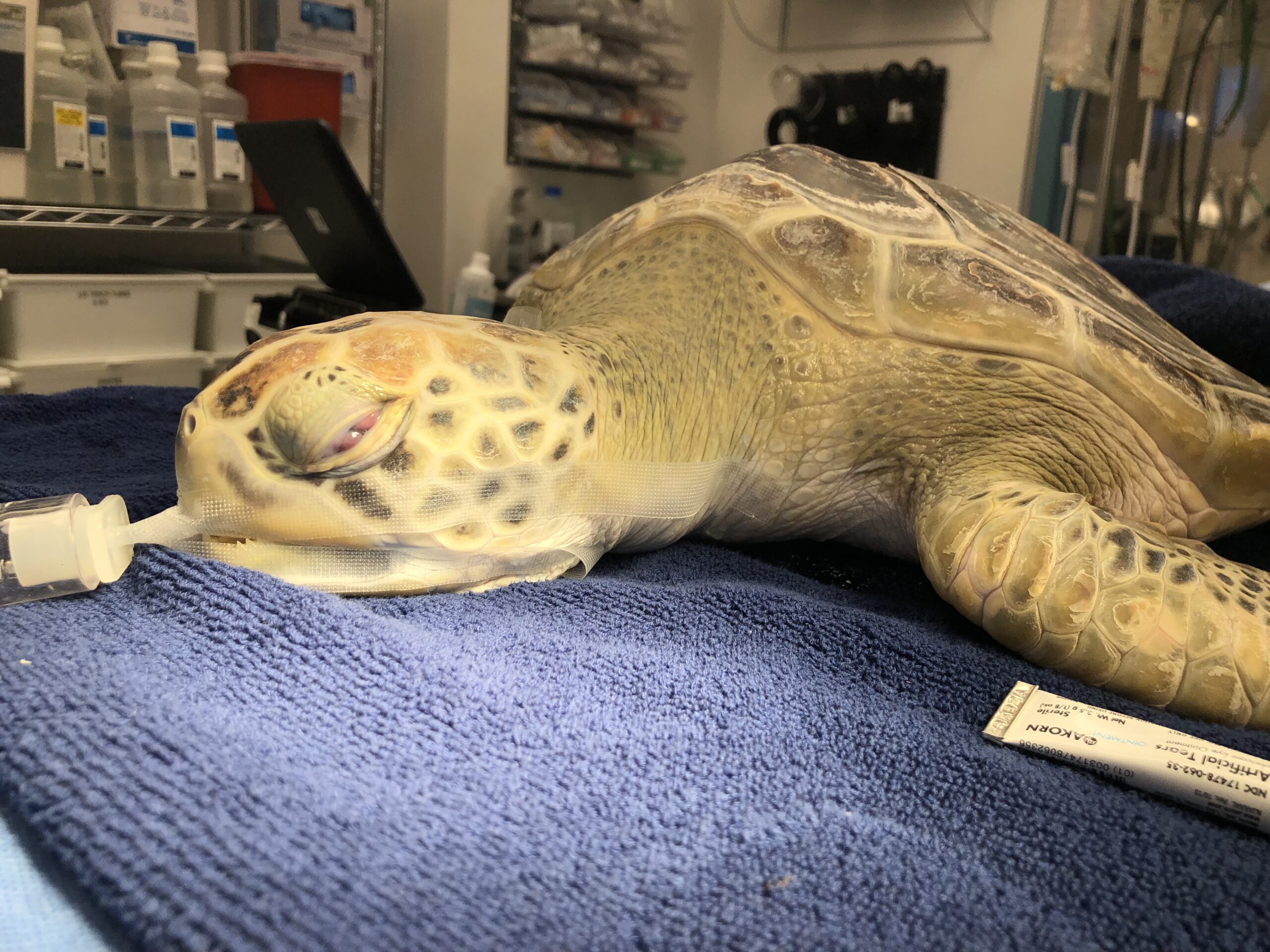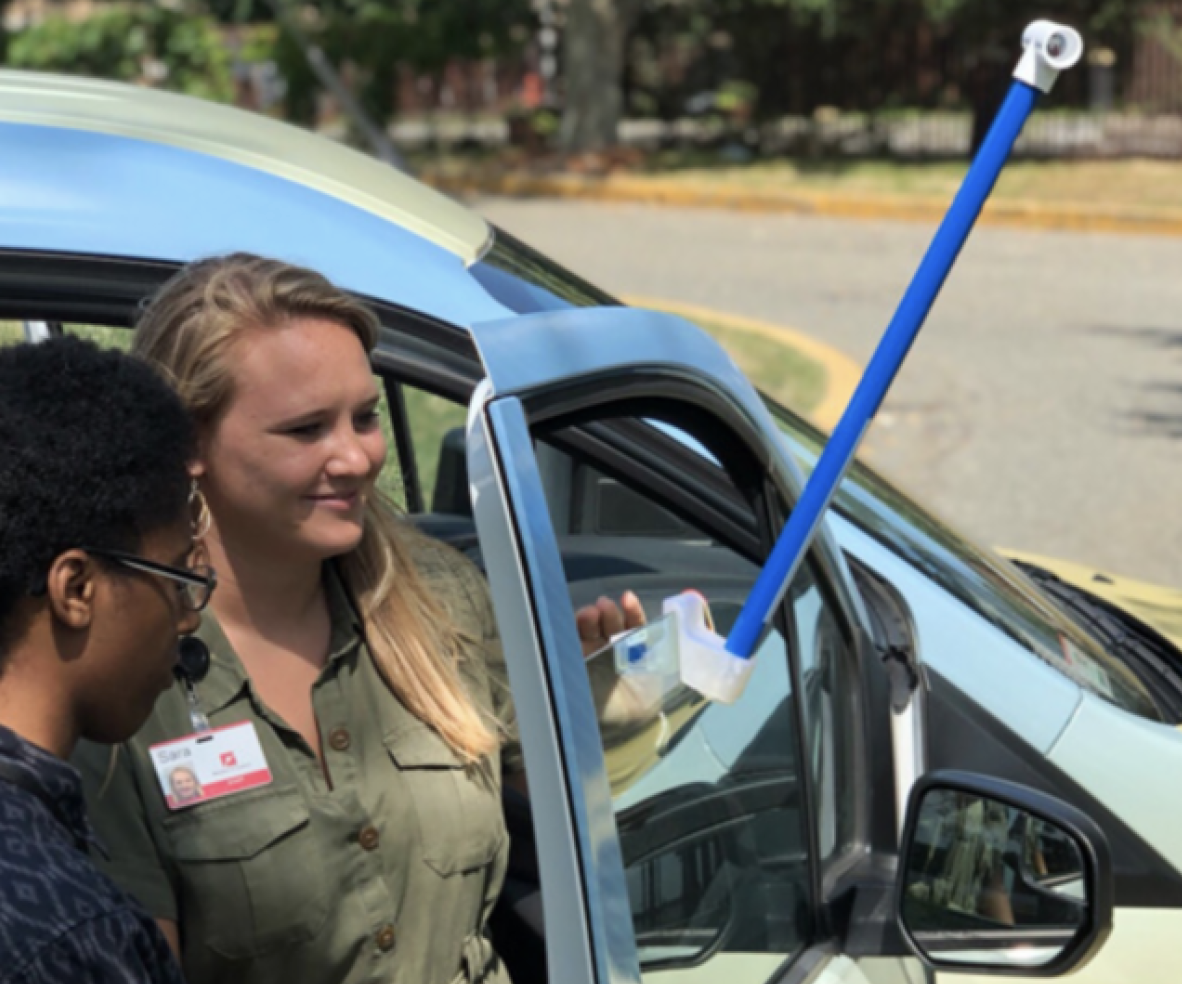Summer in the South – we know it well. High heat is the norm and it’s having a greater impact than we realize. Charleston residents, commuters, tourists and even our beloved sea turtles are reacting to extreme weather conditions. Especially in urban areas, lack of natural landscapes – coupled with the hard surfaces that comprise buildings, benches, roads and more – can lead to a dangerous scenario that impacts our health, quality of life and longevity. When you factor in car usage and industrial activity, the situation only worsens. Extreme heat puts kids, emergency responders, older adults, outdoor workers, athletes and pets at higher risk of suffering from heat-related injuries, like dehydration and heat stroke.
But how exactly does heat affect sea turtles? It begins with what occurs beneath the sand. As sea turtles come ashore to nest, they dig deep holes to deposit their clutch of 60-120 eggs. In six or so weeks’ time, hatchlings will emerge and make their way into the waves. Heat is what determines if a hatchling will be male or female. There’s a saying, “hot chicks and cool dudes” – this applies to hatchlings! The problem is, if the male-to-female ratio is too disproportionate, then their future is at risk when it comes to reproducing the next generation of sea turtles.

 Timon, a green sea turtle patient with FP tumors in his eyelid
Timon, a green sea turtle patient with FP tumors in his eyelidAs they reach adulthood, heat comes into play by way of habitat degradation and beach erosion due to sea level rise and climate change. More recently, research has been conducted on the correlation between climate change and fibropapillomatosis (FP), a virus afflicting sea turtles which can hinder critical functions like swimming, buoyancy, feeding and sight. FP has typically been more common in tropical waters, but recently we’ve had numerous patients from the Carolina coastline admitted to our Sea Turtle Care Center™ suffering from this ailment.
So, what do we do to start addressing the short and long-term plans for handling these heat waves? Bring in citizen scientists to help with the inaugural HeatWatch project in Charleston, a collaborative research campaign occurring in cities across the nation.
Recently, we assisted with a heat mapping campaign in Charleston to better understand and address the distribution of heat at the human level. Volunteers underwent training to temporarily upfit their cars with a special sensor that mounted to their car window. They each chose a pre-planned driving route (like a real-life Mario Kart game) to drive during three periods over the span of a day: morning, midday and evening. As they drove, the sensor would measure the ambient temperature, humidity and GPS coordinates. Collectively, this data will help inform decisions to address heat concerns.

In Charleston, this effort is made possible due to the partnership between the City of Charleston, Medical University of South Carolina Arboretum: Institute for Air Quality Studies and Office of Health Promotion, Citadel James B. Near Center for Climate Studies, Charleston Resilience Network, Climate Adaptation Partners, Charleston Medical District, South Carolina Interfaith Power and Light and Carolinas Integrated Science Assessment.


